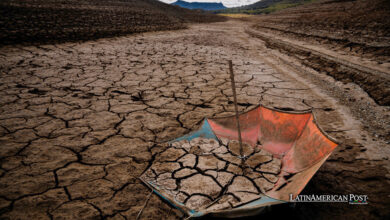Latin American agri-food costs 1.2 billion “hidden” dollars, according to FAO
Latin America's current agri-food systems carry hidden costs of at least $1.2 billion for health, the environment, and society, according to a groundbreaking UN-FAO analysis covering 154 countries. The report points to Brazil and Mexico at the top of this costly regional ranking, with implications for global health and sustainability efforts.

Photo: Pixabay
EFE
Escucha este artículo
Leer en español: La agroalimentación latinoamericana cuesta 1.200 millones de dólares “ocultos”, según FAO
Current agri-food systems in Latin America entail hidden costs equivalent to at least $1.2 billion for health, the environment, and society, according to a pioneering analysis carried out by the Food and Agriculture Organization of the United Nations ( FAO), which includes 154 countries.
According to the 2023 edition of "The State of Food and Agriculture (SOFA)", Brazil (US 503 million) and Mexico (US 249 million) lead the regional ranking.
According to the report, worldwide costs for health, the environment, and society reach at least 10 billion dollars annually, and most of them are determined by unhealthy diets with a high content of ultra-processed foods, fats, and sugars, which cause obesity and other diseases that generate losses in labor productivity.
In the region, this percentage reaches 61.2%, a little lower than the global 70%
“The future of our agri-food systems depends on our willingness to appreciate all food producers, large and small, recognize these real costs, and understand how we all contribute to them and what actions we must take,” said the director general of FAO, QU Dongyu, in a statement released by the organization.
37.3% of costs in Latin America are related to the environment and derive from greenhouse gas and nitrogen emissions, changes in land use, and water use. This is a problem that affects all countries and its magnitude is likely to be underestimated due to data limitations.
Poor countries, the most affected
Low-income countries are, proportionally, the most affected by the hidden costs of agri-food systems and malnutrition, which in the region amount to 1.36%, while in low-income countries, the most significant hidden costs are related precisely to poverty and undernourishment.
The report advocates that governments and the private sector carry out more regular and detailed analyses of the hidden or “real” costs of agri-food systems through real cost accounting, followed by the adoption of measures to mitigate this damage.
The document also calls on governments to use real cost accounting to transform agri-food systems to combat the climate crisis, poverty, inequality, and food insecurity. It is noted that innovations in research and data, as well as investments in data collection and capacity building, will be necessary to expand the application of true cost accounting so that it can inform decision-making transparent and coherent.
“I hope this report serves as a call to action for all partners – from policymakers and private sector actors to researchers and consumers – and inspires a collective commitment to transform our agri-food systems for the good of all,” Dongyu added.
Also read: Flour As An Inclusive Food, a Scientific Project From Venezuela
Adjust agri-food systems
According to the international entity, governments can use different driving mechanisms to adjust agri-food systems and achieve better results in general, including taxes, subsidies, laws, and regulations.
Other attempts to measure the hidden costs of agri-food systems have produced the same estimates as the FAO, however, the organization's new report is the first to break these costs down to the national level and ensure they can be compared across categories. of costs and between different countries.
For the first time, FAO will dedicate two consecutive editions of "The State of Food and Agriculture" to the same topic. This year's report presents initial estimates, while next year's report will focus on concrete in-depth assessments to determine how best to mitigate these costs.




